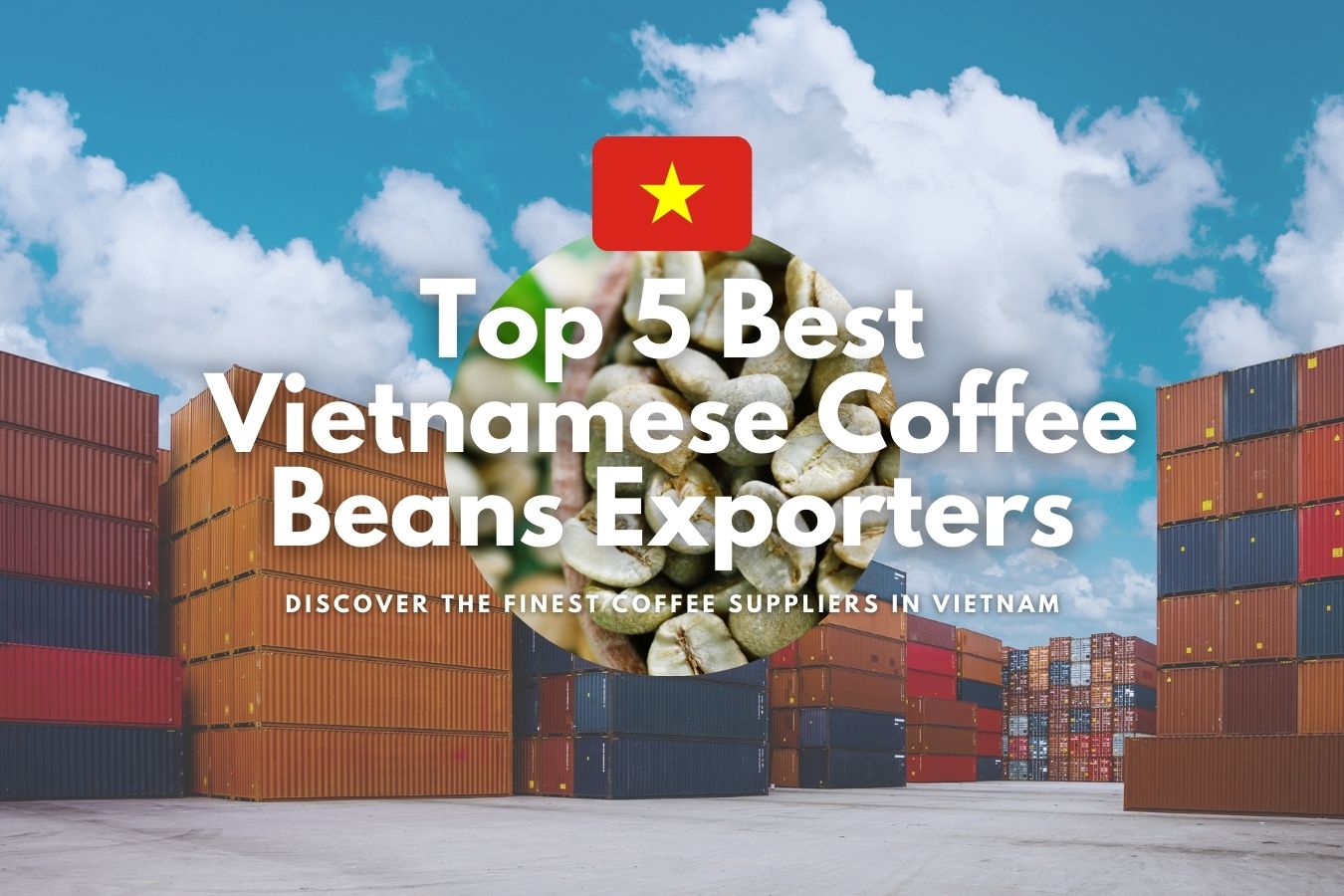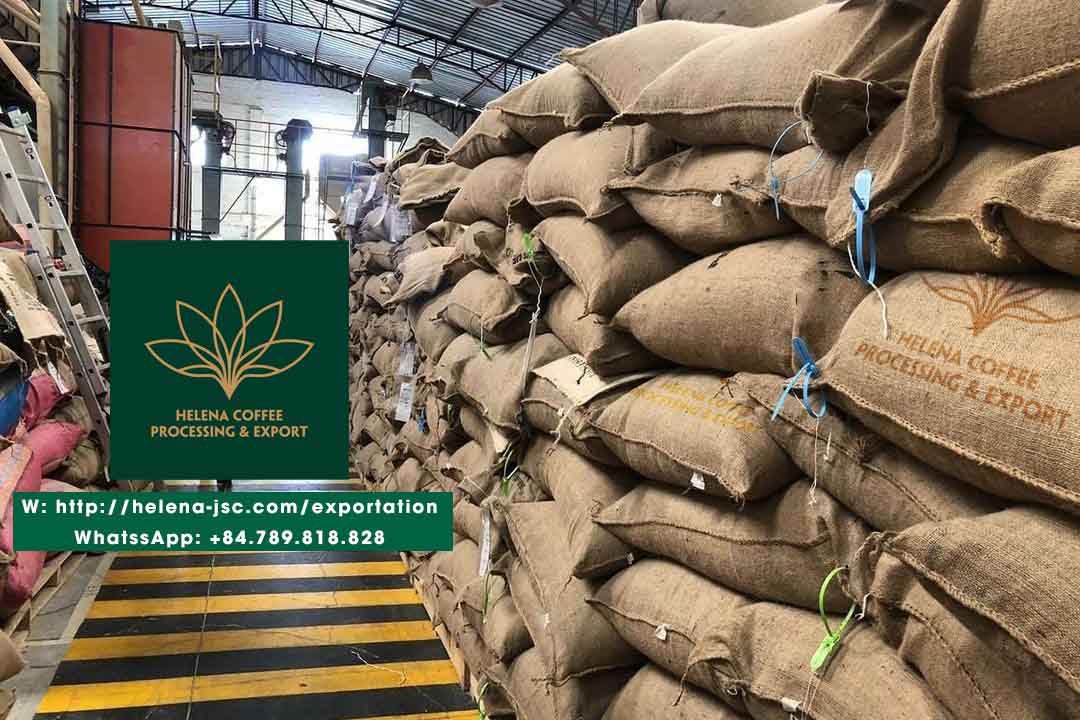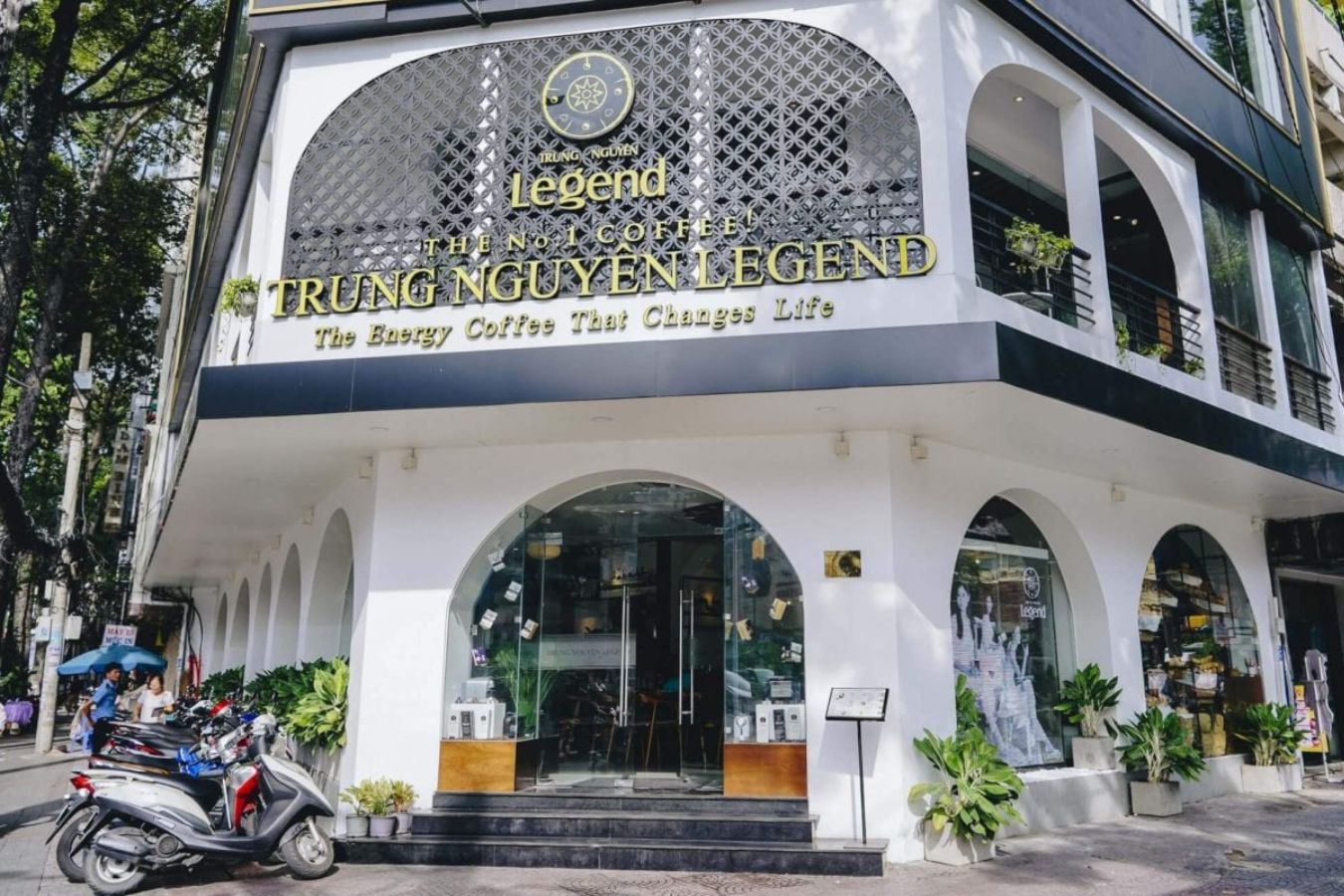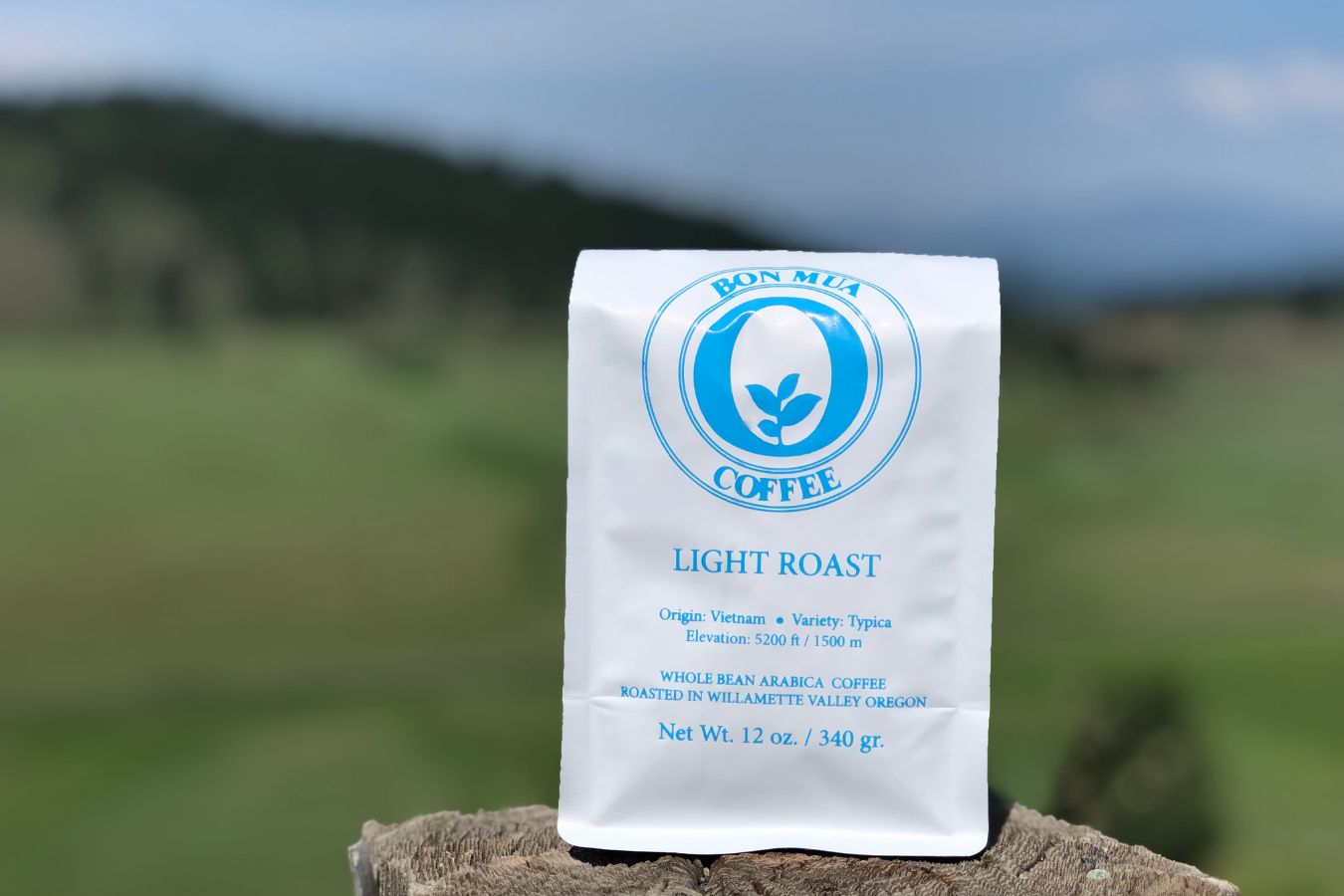
Helena Coffee Vietnam
Helena Coffee is a premier exporter of high-quality Vietnamese coffee beans. With a solid commitment to delivering excellent products and exceptional customer service, Helena Coffee has established itself as a trusted supplier in the global market.
Company Profile:
- Founded in 2016
- Headquartered in Buon Ma Thuot City, Vietnam
- Offers a wide range of coffee beans, including Arabica, Robusta, and specialty blends
Key Services:
- Product sourcing and procurement
- Export and import services
- Customized packaging solutions
- Quality control and inspection
- Logistic services and shipping support
Coffee Products: Helena Coffee Vietnam takes pride in offering a variety of high-quality Vietnamese coffee beans, including Arabica and Robusta varieties. They are dedicated to sourcing premium coffee beans from the finest coffee-growing regions of Vietnam, ensuring a rich and authentic taste that appeals to coffee lovers worldwide.
Accomplishments and Certifications:
- ISO 9001:2015 certified for its quality management system
- Achieved the Vietnam Gold Star Award multiple times for its contribution to the Vietnamese economy
Global Presence: Helena Coffee’s extensive network and solid global presence enable them to efficiently supply coffee beans and other products to customers worldwide. Their commitment to meeting international quality standards has allowed them to build lasting relationships with partners and clients across the globe.
In conclusion, Helena Coffee Vietnam is a leading exporter and importer in Vietnam, providing a diverse range of high quality products, including coffee beans. Their dedication to customer satisfaction and adherence to industry standards and best practices make them a reliable and trusted partner for businesses looking to source premium Vietnamese coffee beans and other agricultural commodities.
 Their products are now exported and consumed in various countries and areas worldwide, including China, Taiwan, Thailand, Singapore, Ukraine, and the United States.
Their products are now exported and consumed in various countries and areas worldwide, including China, Taiwan, Thailand, Singapore, Ukraine, and the United States.
Helena mainly exports Robusta and Arabica coffee beans, and they have made significant progress in the present VN coffee export market.
Trung Nguyen Legend
Vietnam coffee – Trung Nguyen Legend (Trung Nguyen Vietnamese coffee) is currently concentrating on selling two primary products on Amazon best Vietnamese coffee: instant coffee and filtered coffee. While instant coffee is designed for convenience, with Passiona, Legend, Classic, and Special Edition iced milk coffee, filtered coffee is explicitly designed for coffee shops, with five various taste options.

Trung Nguyen Legend coffee has conquered the coffee enthusiast community and resonated in many foreign markets thanks to its diversity and quality of products and the development of cross-border e-commerce. “For coffee and coffee-based beverages, I never used the term ‘delicious’ to evaluate after consuming, but often stated ‘pretty nice.’ or “quite good,” according to an Amazon customer.
This instant coffee from VN, on the other hand, merits a higher grade. Even though I’ve been a long-time fan of Vietnamese pho, I’ve never had the country’s coffee, so I’ve always been curious about how it tastes.
Intimex Group
Intimex Group, headquartered in Hanoi, Vietnam, is a reputable and well-established international trading company specializing in exporting and importing various products, including agricultural commodities such as coffee, pepper, and cashew nuts. The company has earned a strong reputation for its commitment to delivering high-quality products and ensuring customer satisfaction through its professional and reliable business practices.
Company Profile:
- Founded in 1989
- Operates multiple branches and subsidiaries throughout Vietnam
- Offers a diverse range of products, including coffee, pepper, cashew nuts, rubber, and other agricultural commodities
Bon Mua Oregon
After several decades, Mrs. Marberry, who now lives in Salem, joined a commercial mission comes to Asia. It is a Vietnamese coffee bean. Her accomplishment led to the establishment of Bon Mua Oregon of Salem, which provided coffee beans from the family’s farm, which was still a small but profitable enterprise about a mile above sea level in Southwest VN.

Over the last nine months, Four Seasons Oregon has dramatically increased output, delivering green beans to wholesalers in Salem, Eugene, Bend, Portland, Seattle, Southern Oregon, and Arizona. The Four Seasons Oregon Arabica coffee beans and Robusta beans were quickly procured by wholesalers in these areas, who catered to more sophisticated coffee bean palates.
Oregon Four Seasons roasted beans are now available at the EZ Orchards Farm Market, situated at 5504 Northeast Hazelgreen Road in Salem. There are plans for other retail outlets throughout the Willamette Valley and beyond. Customers who want to buy directly from Four Seasons Oregon can do so here.
Simexco
Simexco, also known as Daklak September 2nd Import-Export Company Limited, is a leading exporter of Vietnamese coffee beans with a strong focus on providing high-quality products and ensuring customer satisfaction. Based in Buon Ma Thuot City, the heart of Vietnam’s coffee region, Simexco has built a solid reputation for delivering exceptional coffee beans to clients worldwide.
Company Profile:
- Founded in 1993
- Headquartered in Buon Ma Thuot City, Vietnam
- Specializes in the export of coffee, pepper, and other agricultural products
Key Services:
- Export of high-quality coffee beans
- Customized packaging solutions
- Quality control and inspection
- Logistic services and shipping support
Vietnamese Coffee: Future Growth Expected in Vietnam’s Coffee Exports
Vietnam’s coffee exports are anticipated to increase shortly, driven by rising demand and recovering prices. Global coffee bean prices are climbing due to insufficient supply from major coffee-producing countries and the dwindling of accessible coffee stocks to their lowest levels in years.
Moreover, the COVID-19 pandemic has significantly impacted Vietnam’s primary coffee export markets. As the country continues to implement social distancing measures, domestic consumption of coffee beans is expected to grow, further bolstering the demand for Vietnamese coffee.
Vietnam’s the beans export market is currently Europe, which accounts for 33.8 percent of overall exports and 58.9% of total exports. The EVFTA, in particular, benefits Vietnam’s coffee exports by eliminating the import tax on all unroasted and roasted coffee products entering the market, giving coffee a competitive advantage.
According to the General Department of Customs, Vietnam’s coffee exports totaled 109.5 thousand tons in May 2021, with a turnover of 207.4 million USD, up 1.2 percent in volume and 0.48 percent in value from April 2021; and down 7.49 percent in book but up 3.9 percent in turnover from May 2020.
In general, Vietnam’s coffee exports reached 549.9 thousand tons in the first five months of 2021, with a turnover of 1,032 billion USD, down 20.1 percent in volume and 11.8 percent in turnover from the same period in 2020.
In May 2021, the average export price of coffee was 1,893.6 USD/ton, down 0.7 percent from April 2021 but up 12.4 percent from May 2020. The average export price of Vietnamese coffee goods reached $1,877.9 per ton in the first five months of 2021, up 10.5 percent from the same time in 2020.
Vietnam’s coffee exports to several destinations declined in May 2021; however, exports to some EU countries climbed in comparison to May 2020.
In general, coffee bean exports to key markets such as the EU, US, Japan, and Russia declined or climbed very marginally in the first five months of 2021 compared to the same period in 2020. Exports to foreign markets, on the other hand, are increasing. Other markets, like China, Indonesia, Ukraine, and New Zealand, continued to grow.
In terms of coffee proceeds and export value, Vietnam’s coffee sector is ranked second in the world. By 2020, nearly 80% of coffee proceeds will be exported directly to consumers and overseas roasters, according to the sustainable coffee industry growth proposal. For Vietnamese coffee exporters, this is a hurdle.
Vietnamese coffee: Take on the task
According to Mr. Luong Van Tu, Chairman of the VN Coffee and Cocoa Association, total coffee exports from VN reached approximately 1.7 million tons in the 2013-2014 crop year, with a turnover of over 1 million tons. $3.4 billion (a 17 percent increase in volume and a 12.5% increase in value over the previous year).
According to Vietnam’s Ministry of Rural Development, coffee exports in December 2014 were 168,000 tons, valued at USD 338 million, bringing the total volume of coffee exports to 1.73 million tons and the total value to 1.73 million tons in 2014. 3.62 billion dollars, a 33.4 percent increase in volume and a 32.2 percent increase in value over 2013. Vietnamese coffee is sold in more than 80 nations and territories throughout the world.
Vietnam’s primary coffee import markets include: The EU market reached 685 thousand tons, worth more than 1.39 billion dollars, up 38% in volume and 38% in value over the same period in 2013, accounting for 42.5 percent of the country’s coffee exports; the US market reached nearly 154 thousand tons, worth $335 thousand, up 22% in volume and 23.6 percent in value over the same period in 2013, accounting for 10% of the country’s total coffee import and export turnover.
However, with a market share of 14 percent and 10.2 percent, Germany and the United States are Vietnam’s two biggest coffee import markets, followed by Italy, Spain, Japan, and other markets with a high growth rate. Coffee exports to China, in particular, have expanded in recent years, according to firms, and are a particularly beneficial market due to the short transport distance.
According to the World Coffee Organization, global coffee consumption will reach 147.2 million bags in 2015. Due to lower proceeds in key coffee-producing countries and increased global demand for coffee, the supply of coffee will be 5-11 million bags short next crop year.
Vietnam’s coffee area remains at 626,000 hectares, with a production of 1.3 million tons, according to the Institute of Policy and Strategy for Agriculture and Rural Development. In the crop year 2014-2015, the price of coffee has risen illegally. The price of a new crop normally lowers. However, in the second half of 2015, it will fall.
The processed coffee business, according to Mr. Luong Van Tu, Chairman of the VN Coffee – Cocoa Association, will encounter a variety of obstacles. Vietnam’s market was officially opened to ASEAN countries in 2015. As a result, governments will have many chances to engage in Vietnam’s processed coffee business, putting competitive pressure on the Vietnamese market.
Furthermore, six free trade agreements (TPP, EU FTA, Russia, etc.) are being negotiated; the market for foreign investment firms in Vietnam remains wide open. On the other hand, in the EU and some other countries, the import duty on processed coffee is extremely expensive (in Germany, the tax on processed coffee is up to 2 euros/kg).
VN has roughly 100 green coffee export businesses, according to the General Department of Customs. There are 14 firms with foreign investment capital among the 30 Vietnamese coffee export enterprises with large turnover (FDI). According to the data, Intimex Group Joint Stock Company is still the enterprise with the highest green coffee export value in Vietnam for the crop year 2013-2014, Tin Nghia Corporation is in second place, and Tin Nghia Corporation is in second place. Third place went to Louis Dreyfus Commodities Co., Ltd., a foreign-owned subsidiary.
In their efforts to become a direct supplier to foreign roasters, green coffee exporters are in a “pincer” position due to severe competition from FDI businesses.
Mr. Le Tien Hung, General Director and Chairman of the Board of Directors of Dak Lak 2-9 Import-Export Company, stated that large exporters are in desperate need of high-quality coffee berries to sell at high rates, rather than simply hoping to sell to international roasters.
Mr. Hung stated that there are various challenges and impediments in the direct selling stage, including: I contracts that must be paid within 240 days of the negotiation date. As a result, if the company spends a dollar of capital, it will almost immediately be recouped;
(ii) Businesses who intend to supply items in January 2015 must have samples ready to transmit by November 2014, and clients must accept them in order to manufacture goods. As a result, selling roasted and ground coffee directly is highly challenging for enterprises.
(iii) Another issue is that foreign roasters are unlikely to purchase all of their coffee from a single Vietnamese hub. Furthermore, firms must go through intermediary organizations to ensure that raw supplies are delivered on schedule, therefore eliminating the intermediate selling stage and replacing it with direct sales is not conceivable.
Change is necessary to overcome obstacles.
VN had a strong coffee crop in 2013-2014, according to Mr. Phan Minh Thong, General Director of Phuc Sinh Joint Stock Company, with stable pricing and high earnings from the coffee business. However, the current state of the coffee industry is quite challenging. Mr. Thong stated that in order to develop, we must modify the way we do business significantly.
As a result, export coffee companies must actively participate in trade shows all over the world to learn about how coffee is sold. Many coffee shops exist nowadays, but they are unable to discriminate between good and terrible coffee. As a result, selling at a high price is quite difficult.
Domestic coffee costs have dropped substantially, according to some coffee industry specialists, with rates as low as 30,700 VND/kg at times. Coffee prices have risen again in the last few months of the year, and are projected to stabilize in 2015 as supply from Brazil’s biggest coffee market decreases. The price of coffee is expected to be over 40,000 VND/kg, with an export price of over 2,000 USD/ton.
Coffee quality has been a contentious matter for decades, according to Mr. Nguyen Thanh Toan, Deputy General Director of Coffee Inspection Joint Stock Company and import and export goods.
Because quality is only specified in terms of black, broken, and grain size, it does not reflect its full worth. Garden nutrition, age, illnesses, variety structure, collection, storage, and processing are all factors that contribute to quality deterioration.
Exporting enterprises have yet to focus on expanding processing and collecting fresh berries to process green coffee as soon as they are harvested. In past harvest years, the emphasis was mostly on coffee varietals with straightforward criteria and low-value quality.
However, in the last three years, enterprises have increased their investment in factories and advanced processing technologies, as well as in farmer and business replanting, resulting in an improvement in the quality of Vietnamese coffee. There are noticeable differences.
Toan claims that international firms buying Vietnamese coffee are progressively enforcing stronger standards and quality controls, with a focus on moist, polished coffee rather than black-processed coffee. Roasters, on the other hand, are more interested in GIs and origin coffee with the “Ban Me Thuot Coffee” brand.
As a result, management agencies and export processing companies must pay close attention and align export quality with global market trends. Customers require a variety of contents, including food safety and hygiene, natural resource protection and management skills, and farmer proceeds levels.
To increase coffee quality, Mr. Toan believes that enterprises, organizations, and individuals should cooperate or provide financial support to farmers in replanting, tending, harvesting, preliminary processing, and preservation of coffee export. Furthermore, solutions such as formulating a coffee industry development strategy and continuing to support trade promotion and branding activities are required.
Overview of the export coffee market: Vietnam’s exports are expected to reach over 1.7 million tons in 2020, with a turnover of 2.7 billion USD, accounting for 18% of the market and more than 10% of global coffee value.
Coffee is one of Vietnam’s top ten main exports, and one of only six with an annual export value of more than 3 billion dollars.
Green coffee exports account for the vast majority, whereas deep-processed coffees such as roasted and ground coffee, and Vietnamese instant coffee for domestic use and export account for only 12%.